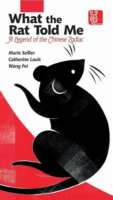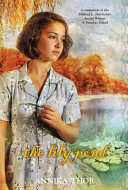Cheri Anderson, University of Arizona, Tucson, Arizona
 This July blog highlights the need to include more in depth discussion of the illustrations within picture books in published book reviews. The blog entries will each discuss an award-winning international picture book as an example of the kinds of discussion that should be occurring more frequently in reviews.
This July blog highlights the need to include more in depth discussion of the illustrations within picture books in published book reviews. The blog entries will each discuss an award-winning international picture book as an example of the kinds of discussion that should be occurring more frequently in reviews.
Illustrations create a depth of meaning within picture books that are essential to the reading experience for that book. Unfortunately most picture book reviews give only basic information about the illustrations, usually just the medium or technique. Although the medium used by illustrators and the techniques for how they create the art is important, many other visual aspects elements are equally as interesting. The complexity of illustrators’ decisions as they go about their creative processes is fascinating. Some of these decisions are also made by the art directors at the publishing companies. Visual decisions such as the book format, size of the book, font selection, and scale add to meaning making for the reader. Through skillful use of visual elements, such as color, line, space, and perspective, the illustrator engages the emotions of the reader and directs the reader’s attention. Just as important as the written text in establishing authenticity in picture books is a close examination of the illustration style and whether it indicates a particular location of where the story takes place and whether the style and the details in the images are authentic to the culture depicted in the book. Further, the illustrations need to be examined for possible stereotypes or inaccuracies.
Continue reading →
 Recently the American Library Association gave out its awards for books for Youth and Young Adults at its Mid-Winter Convention in Dallas, TX. In the age of Twitter and other social networks, those of us not able to be in Dallas were able to participate in the announcements in real time. These awards are considered the Oscars of Children’s Literature in the United States, with the Caldecott winner (this year Chris Rascha) and the Newbery winner (this year Jack Gantos) appearing on the Today show the next day. There are so many children’s literature geeks in this country that the event “trended” on Twitter.
Recently the American Library Association gave out its awards for books for Youth and Young Adults at its Mid-Winter Convention in Dallas, TX. In the age of Twitter and other social networks, those of us not able to be in Dallas were able to participate in the announcements in real time. These awards are considered the Oscars of Children’s Literature in the United States, with the Caldecott winner (this year Chris Rascha) and the Newbery winner (this year Jack Gantos) appearing on the Today show the next day. There are so many children’s literature geeks in this country that the event “trended” on Twitter.

 This July blog highlights the need to include more in depth discussion of the illustrations within picture books in published book reviews. The blog entries will each discuss an award-winning international picture book as an example of the kinds of discussion that should be occurring more frequently in reviews.
This July blog highlights the need to include more in depth discussion of the illustrations within picture books in published book reviews. The blog entries will each discuss an award-winning international picture book as an example of the kinds of discussion that should be occurring more frequently in reviews.